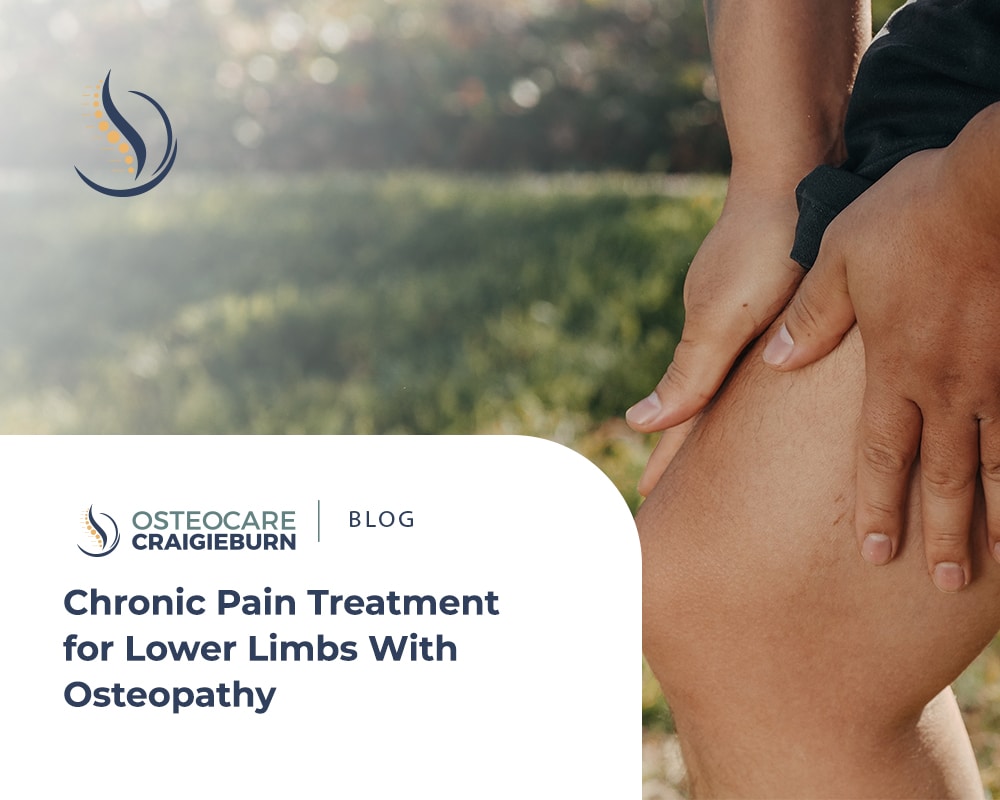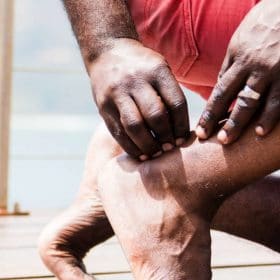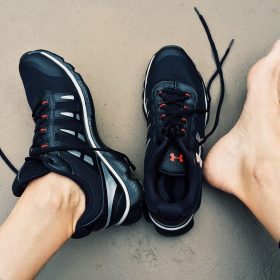Overuse injuries in the lower limb are a common presentation to Osteopaths. Many can be managed with a change in training volume, as well as a basic home rehab program. Chronic or persistent injuries may require professional input. Take a moment to read how chronic pain treatment for lower limbs can be helped with osteopathy.
Here are five examples of commonly seen presentations.
PATELLO-FEMORAL JOINT PAIN
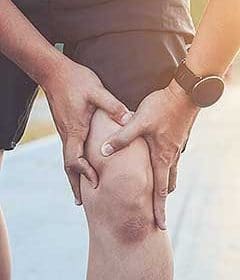
Also known as PFJ syndrome and ‘moviegoers’ knee.
One of the most common knee injuries seen by physios and medical practitioners.
Pain is generally vague and non-specific during aggravating activities. Can be located on either side or under the patella (kneecap).
The knee does not usually swell as a result of this injury, but this can depend on any other knee problems you have.
Onset is due to sports with repeated knee flexion/extension – that is, running, especially up and down hills, steps and stairs. Prolonged sitting (more than 20 minutes) can also bring about pain, hence the name ‘moviegoers’ knee.
TREATMENT
Usually a combination of knee taping, manual therapy, shockwave therapy, muscle stretching and strengthening. Modification to training may be required.
SHIN PAIN
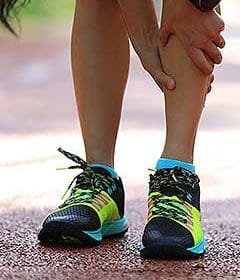
Involves either bone stress to the tibia (shin bone); compartment syndrome, which occurs when the nerves and blood vessels become compressed within the enclosed space of the shin; or medial tibial stress syndrome, commonly known as shin splints.
Pain is usually around the lower border of the shin but can be around the shinbone and even the calf.
It must be assessed early. It can worsen quickly and limit running.
TREATMENT
Firstly, medication and ice. Massage and stretching can help tight and overused muscles. A foot biomechanical assessment is necessary and a review of running shoes. Assessment of running technique can also help and training schedule may have to be modified.
MUSCLE CRAMP
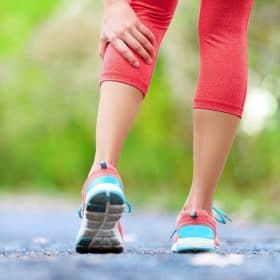
Most common in the calves.
Can present as a tightening or a deep achy sensation.
If cramping is severe and unrelenting during exercise, the problem should be examined by a medical practitioner.
TREATMENT
Simple calf cramping can be a result of early fatigue of the muscle. Therefore, stretching exercises, as well as a strengthening program, will help. Modification of the training program may be required. Inadequate hydration can also be a major factor. Ensure that exercise recovery involves restoration of fluids and salts.
ACHILLES TENDINOPATHY
Common running injury.
Pain is localised to the achilles region.
The onset of pain may have been gradual and, in some cases, sudden.
In its milder form, pain is usually worse at the beginning of runs, then gets better as the area warms up. It is generally sore during cool-down after a run has been completed.
Worse in the morning when getting out of bed.
TREATMENT
Rest, shockwave therapy, massage and ice. Strengthening and stretching program, modification of training schedule, assessment of foot biomechanics, footwear and running technique can help.
PLANTAR FASCIITIS
Also known as heel spur pain.
Common running exercise injury causing pain under the heel area.
Pain is generally localised to the heel.
Pain is usually worse in the morning, improves with activity during the day.
Stretching of the padding under the foot usually causes pain, such as when taking off when running.
TREATMENT
Rest, taping, shockwave therapy, massage, joint mobilisation and ice may help. Stretching of the plantar fascia (a ligament along the bottom of the foot) and calf muscles, massage to the calves, and heel cups or wedges can help. The Strassburg Sock is a very useful tool to prevent the fascia from tightening up during sleep.
A foot biomechanical assessment is useful and ensuring adequate footwear. Modification of training may be required.
Chronic Pain Treatment for Lower Limbs
There is a range of issues and treatment for chronic pain in the lower limbs. Just remember you don’t have to put up with ongoing pain, book an appointment today with one of our qualified Osteopaths who can treat and manage chronic pain.
